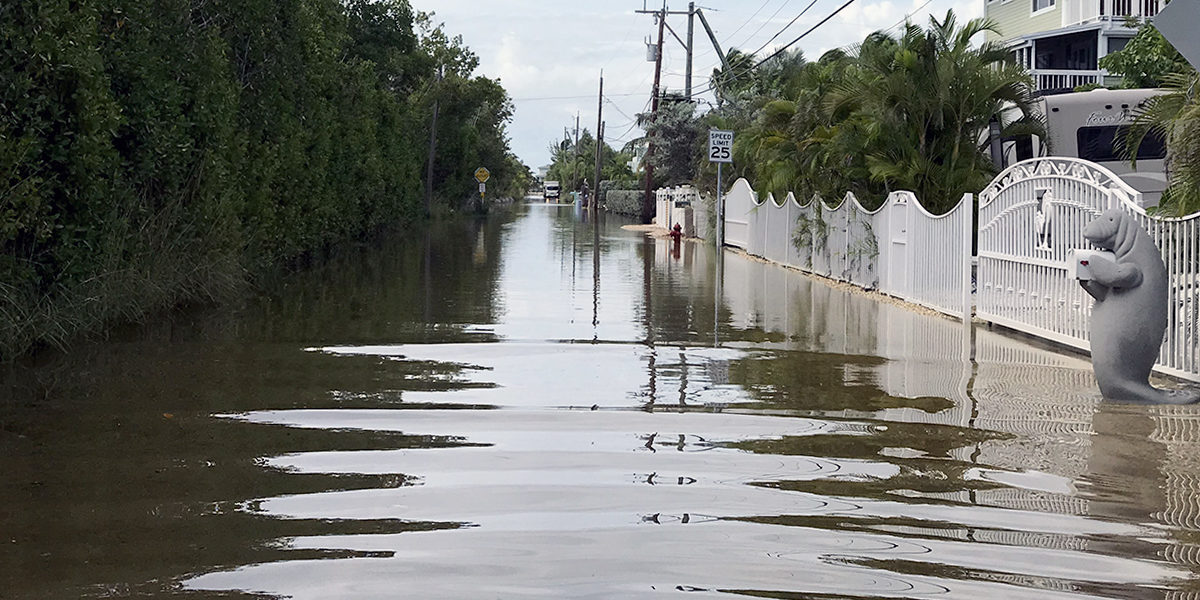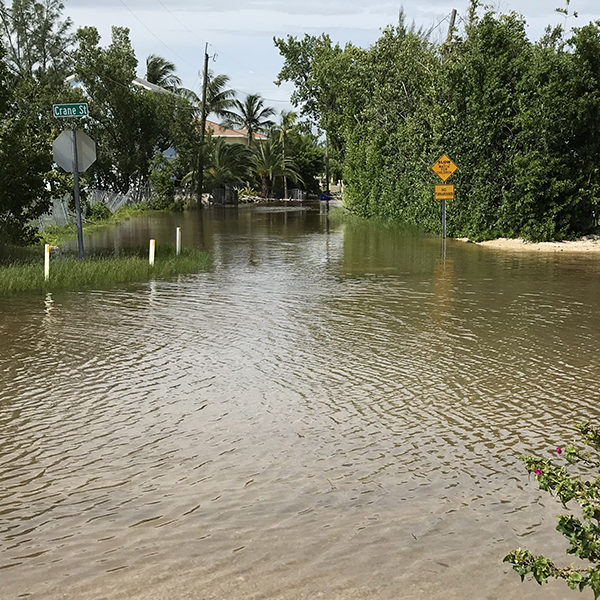
Communities in the South Atlantic coastal region are increasingly experiencing the effects of re-occurring flooding from sea-level rise, which compromises infrastructure critical to transportation, stormwater and emergency operations. This ‘nuisance flooding’ also impacts the quality of life for residents faced with disruption of essential services and reduced mobility. The effects of rising seas and flooding are experienced by coastal communities in different ways and to different levels of impact. As such, much can be learned from investigating and addressing this issue at a local level but from a regional perspective.
With this opportunity in mind, the South Atlantic Sea Grant programs of North Carolina, South Carolina, Georgia and Florida partnered with the NOAA Office for Coastal Management and small- to medium-sized coastal communities representing distinct geographies, economic bases, demographic profiles and infrastructure status. Each community identified as an ‘end-user’ cited a critical need for technical and outreach assistance to assist them in moving forward with resilience planning and the implementation of appropriate adaptation actions, including, for example, a voluntary assessment of flood risk and associated costs, measured by a Community Rating System (CRS).

Flooding in 2019 at a Twin Lakes Subdivision in Key Largo, Florida
Jason Evans, executive director of the Institute for Water and Environmental Resilience at Stetson University and project lead for the Florida portion of the regional project, created a team to identify and catalogue current and future flood vulnerabilities in Monroe County, Florida. The team worked with the county to incorporate their findings into an updated watershed management plan, a key requirement for lowering the community’s CRS score.
“The watershed management plan provides Monroe County with a very comprehensive inventory of its vulnerabilities for current and future flood risks associated with storm surge and sea-level rise,” said Evans. “Monroe County could not have achieved a CRS Class 3 rating without this project.”
The regional project team also performed an analysis of coastal roads in all four South Atlantic states. Collaborating with local teams of legal scholars, including Thomas Ruppert of Florida Sea Grant, a policy paper on obligations and adaptation options that coastal communities have for roads was developed. The group chose roads because they and stormwater systems are some of the first coastal infrastructure to show impacts from sea level rise.

Front page of Roads to Nowhere in Four States: State and Local Governments in the Atlantic Southeast Facing Sea-Level Rise publication
“Before we tackle adaptation, we have to understand the legal framework,” said Shana Jones, Georgia Sea Grant Sea Grant Legal Program director and project leader. Roads to Nowhere in Four States: State and Local Governments in the Atlantic Southeast Facing Sea-Level Rise was published in Columbia Journal of Environmental Law and was selected as one of the top four environmental law articles of the year by the 2020 Environmental Law and Policy Annual Review. It was also chosen as one of the top 15 environmental law articles for the year by 2020 Land Use & Environment Law Review, a prominent annual anthology of land use and development legal articles.
Due to project efforts, Monroe County, Florida, improved its Community Rating Score, or CRS, that will provide more than 14,000 National Flood Insurance Program policyholders in the county a 35 percent premium discount on their flood insurance. According to a Monroe County news release, discounts will save policyholders about $7.5 million a year, an average of $522 per policy per year, beginning in April 2022. The project contributions and impact was lauded by Rhonda Haag, Monroe County Chief Resilience Officer, as “pivotal to our receiving the lowered CRS rating … It was really important for the county.”
Based on the successes of partnership and leveraging, this $300,000 multi-state collaborative project is tangibly addressing escalating needs for resilience options in the South Atlantic region. To continue this success, the Sea Grant programs again partnered with the NOAA Office for Coastal Management to provide $403,000 for a second resilience-oriented regional grant in 2019. Evans is the principal investigator for the project that will assess options for flood-resilient transportation upgrades in communities in the four states. The project builds on the success of the inaugural regional project and is scheduled to conclude in January 2022.
“Working in this way, across disciplines and across state lines to help a diverse set of coastal situations and economies, is how Sea Grant is going to make coastal communities better able to withstand flooding from rising seas,” says Sherry Larkin, Florida Sea Grant director. “Resilience is a core Sea Grant focus area and this project, and the impactful results, are a perfect example of how state and federally-funded programs can tangibly support the needs of coastal communities.”